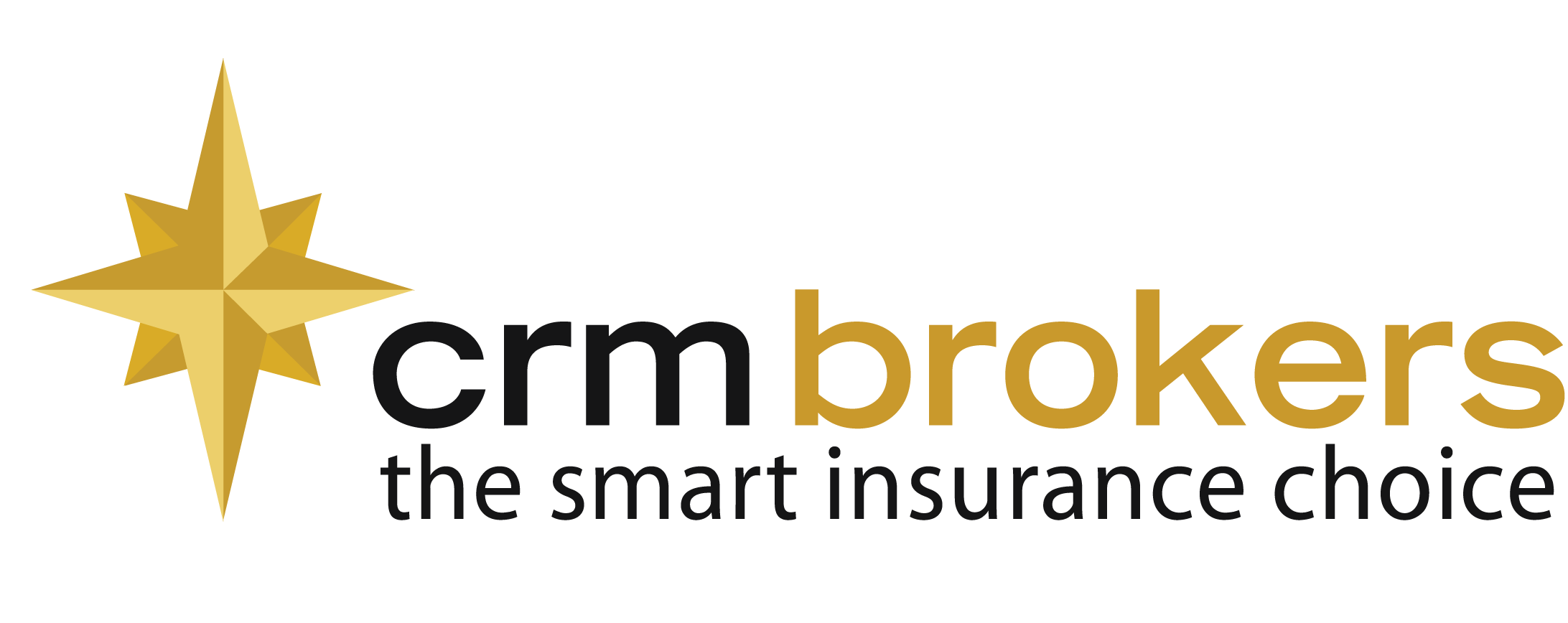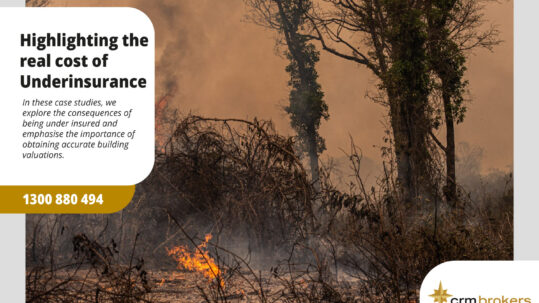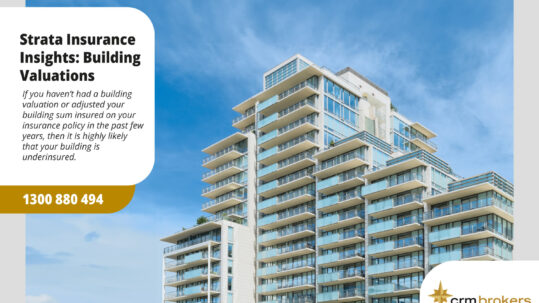
28 Jan Frequently Asked Questions: Strata Insurance Major Loss
Frequently Asked Questions: Strata Insurance Major Loss
During the recent catastrophic weather events, our claims team received a range of important questions from strata managers and lot owners.
We have compiled these into a list of Frequently Asked Questions and a Summary of Additional Benefits table that will assist with common queries.
CRM Brokers has also joined other industry players including NIBA to offer broking support to those who have suffered loss as a result of the recent fires and currently do not have an insurance broker but need assistance with their insurance claim.
What property is covered by a strata insurance policy?
The property covered only includes property owned by the Owners Corporation such as all buildings (units/lots), outbuildings, fixtures permanently attached to the building, structural improvements and common area contents.
This means cover does not extend to property not owned by the Owners Corporation for example; vehicles, caravans, lot owner (personal) contents, carpets and blinds within a lot.
Most Strata Insurance policies are accidental damage policies, covering sudden and unforeseen losses and subject to exclusions e.g. wear and tear, general deterioration, maintenance related issues and defects.
If my building is destroyed by, for example, a bushfire and needs to be rebuilt, will my Policy pay for this?
A strata policy will always respond up to the Building Sum Insured amount (BSI) and other limits in place, as set out in your policy documents e.g. schedule, policy wording etc. The amounts paid out are tied to, and restricted by, these factors so there cannot be a full assurance that ALL costs will be recovered e.g. where underinsurance exists.
Under strata law, if an Owners Corporation building is damaged or destroyed, it must be repaired, rebuilt or replaced, restoring to a condition that is not worse or less extensive than that part when new. So, the Owners Corporation has a legal duty to have insurance in place, with covers and limits that meet these standards, as a minimum requirement. The risk here is that, should a total loss occur and the strata building is underinsured, the Owners Corporation will be in breach of the law (even if it is relying on a Valuation), and out of pocket.
What is Catastrophe cover, and when does it apply?
This policy/section covers damage caused to property by an event which is declared officially as a catastrophe by the Insurance Council of Australia (ICA). Recent examples include;
- A catastrophe (CAT195) was declared by the insurance industry, covering a series of fires now encompassing 183 postcodes across four states which impacted homes and businesses from the 8th of November 2019.
- A catastrophe (CAT185) was declared, covering a significant hail event on the 20th of December 2018, impacting multiple metro and rural regions across NSW.
Following a catastrophe, the demand surge for trades and materials will result in an escalation of rebuilding and replacement costs. Although strata property/buildings are covered for damage up to the Building Sum Insured amount, Catastrophe cover provides additional limits when the original sum is exhausted, due to the increased costs. This cover also includes extra coverage for Loss of Rent and Temporary Accommodation.
Most strata underwriters offer Catastrophe cover as an option that must be selected before it can apply.
What assistance is there for emergency accommodation?
Reasonable emergency accommodation costs are covered where the unit occupied becomes unfit to be occupied for its intended purpose. The amount covered varies between insurers. Some insurers will also include reasonable costs for meals.
How much will strata insurance pay towards temporary accommodation?
This compensation is only available when the insured property, occupied by the unit owner, is damaged by any cause/event not excluded, for example, a bushfire or storm, whereby the damage renders a lot unfit to be occupied for its intended purpose. Reasonable costs will be covered from the time of the event, until the time the unit owner reoccupies the lot.
What can I claim for Loss of Rent under my Strata policy?
When the property is leased out, this cover will compensate the lot owner for loss of rent in the event the insured property is damaged and/or is inaccessible by any cause not excluded, whereby the damage renders a lot unfit for its intended purpose.
The amount is calculated based on the annual rentable value that would have been applied to a unit before the loss or damage that resulted in the unit becoming unfit for occupancy.
Documentation required; a copy of the Lease Agreement, Rental ledger showing nil rent being received and/or reimbursement of the rent. If there is no Rental Ledger, the insurer will require bank account statements showing the scheduled rent before and weeks after the incident showing nil rent being received.
This benefit amount is generally based on a percentage of the building sum insured and is in addition to the replacement of the building itself. The amount is usually paid directly to the lot owner and not the Body Corporate/Owners Corporation.
What is the difference between ‘Flood’ damage and ‘Water’ damage?
In a strata policy, damage caused by a flood is generally excluded and will be noted as an ‘Exclusion’ in the insurer’s Policy Wording and Schedule. In other words, Flood cover needs to be expressly selected, and noted as so, on the Policy Schedule.
Strata policies include a standard definition of flood, which was introduced to Australian regulations in June 2012. The standard definition of flood in Australia is:
The covering of normally dry land by water that has escaped or been released from the normal confines of:
- A lake or river or creek or another natural watercourse, whether or not altered or modified; or
- A reservoir or canal or dam.
Water damage is covered under Policy/Section 1 of the Strata Policy under ‘damage to insured property’ and is generally described as any partial or total accidental physical loss, or destruction of property from any sudden and accidental cause not otherwise excluded.
Where a policy does not pay a claim involving damage caused by water such as a burst pipe, leaking shower or roof, the declinature will outline the reason by highlighting the ‘exclusion’ from the Policy Wording. The declinature could arise from the lack of maintenance, wear and tear; gradual corrosion/deterioration, defects, faulty workmanship/materials etc.
What are Common Area Contents?
These include contents owned by the Body Corporate/Owners Corporation such as carpets within hallways and lobbies, pot plants, mirrors and other decoration within common areas. Also included are washing machines and dryers owned by the body corporate or owners corporation and used by all unit owners and housed in common laundries.
The cover provided by the Strata Building policy ends when any property is owned by the individual lot owner e.g. carpets and blinds within the unit/lot. Therefore, Common Area Contents does not include the personal belongings of the Lot Owner and/or Tenant. Any claim concerning these contents should be referred to the Contents or Landlord’s Insurer.
Can I claim for boarding of Pets?
Reasonable costs are included for boarding pets or security dogs where the lot/unit is occupied solely for residential purposes, and the lot/unit is made unfit for intended purpose by damage to the insured property, and temporary accommodation does not allow pets or security dogs.
Summary of Additional Benefits
We often are asked about the additional benefits applicable when a catastrophe occurs. The below document contains a comparison between Strata Insurers’ standard residential policy wording.
Download Summary of Additional Benefits Here
Stay Informed – Connect with us on LinkedIn
Important Notice
This article provides information rather than financial product or other advice. The content of this article, including any information contained in it, has been prepared without taking into account your objectives, financial situation or needs. You should consider the appropriateness of the information, taking these matters into account, before you act on any information. In particular, you should review the product disclosure statement for any product that the information relates to it before acquiring the product.
Information is current as at the date the article is written as specified within it but is subject to change. CRM Brokers make no representation as to the accuracy or completeness of the information. Various third parties have contributed to the production of this content. All information is subject to copyright and may not be reproduced without the prior written consent of CRM Brokers.
Strata Insurance Insights: The Real Cost of Underinsurance
Simply put, underinsurance occurs when the sums insured are not sufficient to co...
11 April, 2024Strata Insurance Insights: Building Valuations
While securing appropriate insurance coverage is fundamental for strata property...
14 March, 2024The Alarming Rise of Business Email Compromise and the Vital Role of Cyber Insurance
In today’s rapidly evolving cyber threat landscape, cybercriminals are con...
27 February, 2024Navigating High-Risk Tenancies and Property Insurance
When it comes to insuring properties with commercial tenants, regardless of whet...
13 February, 2024





